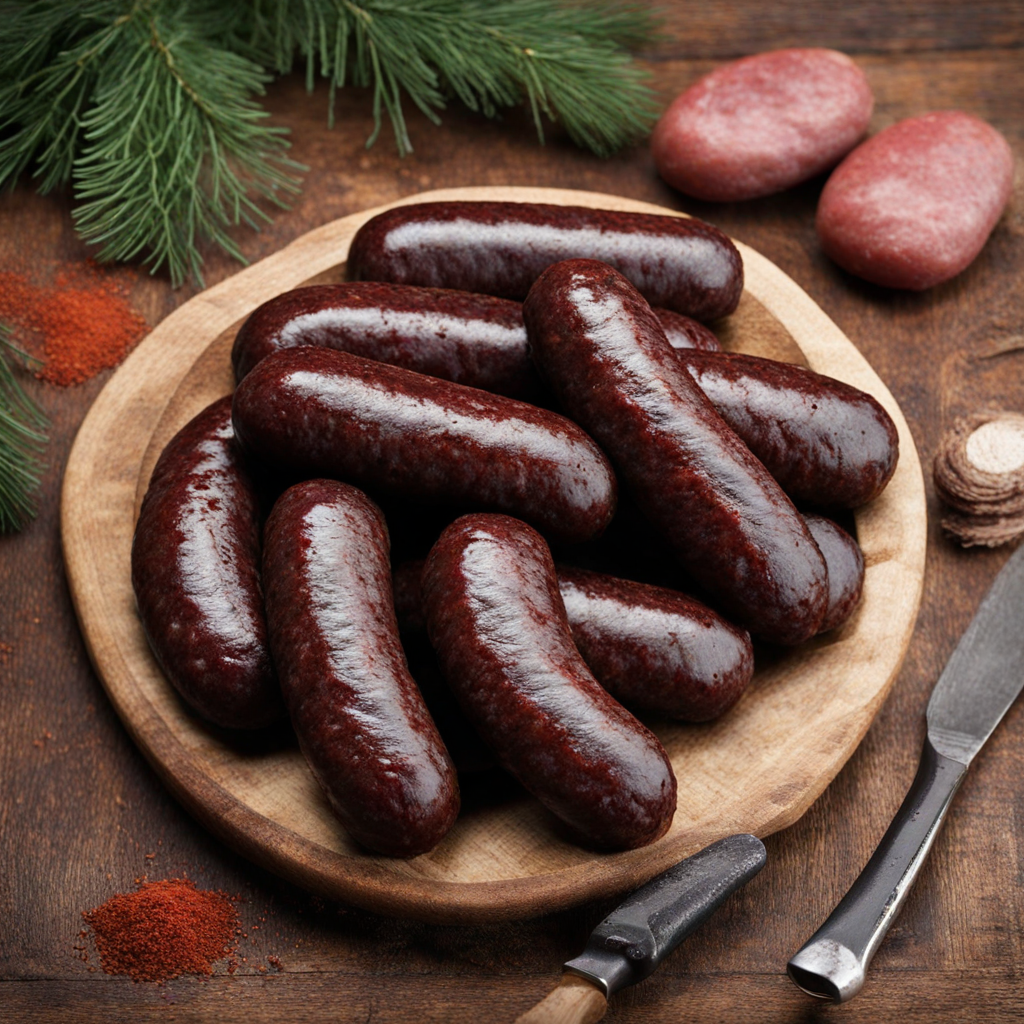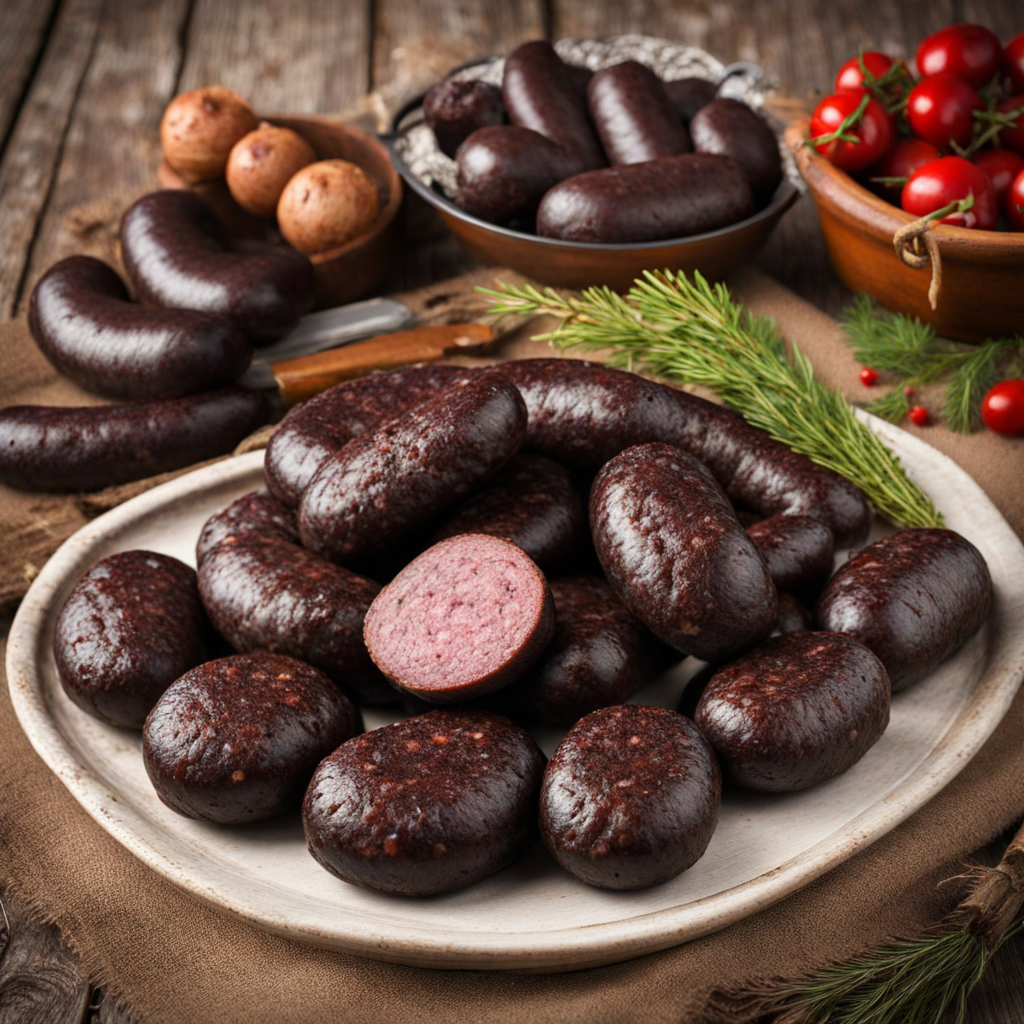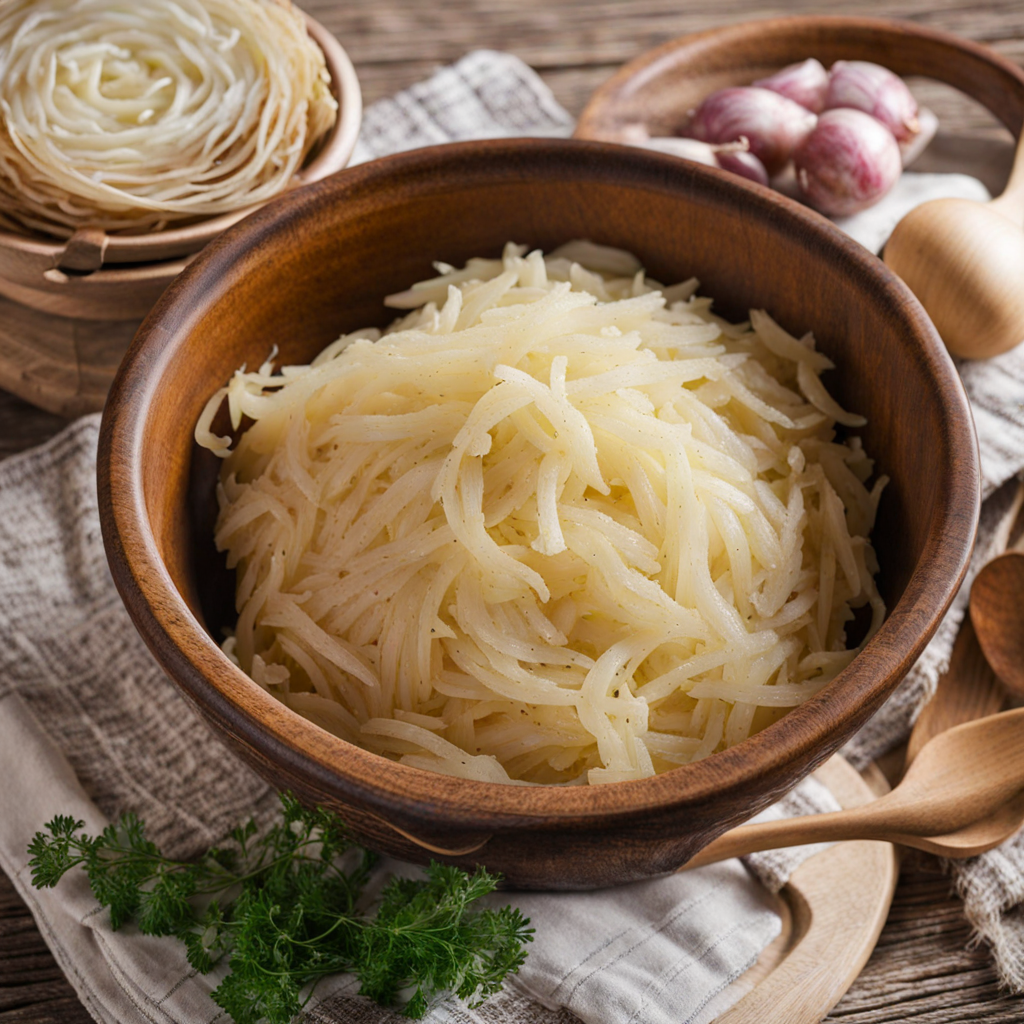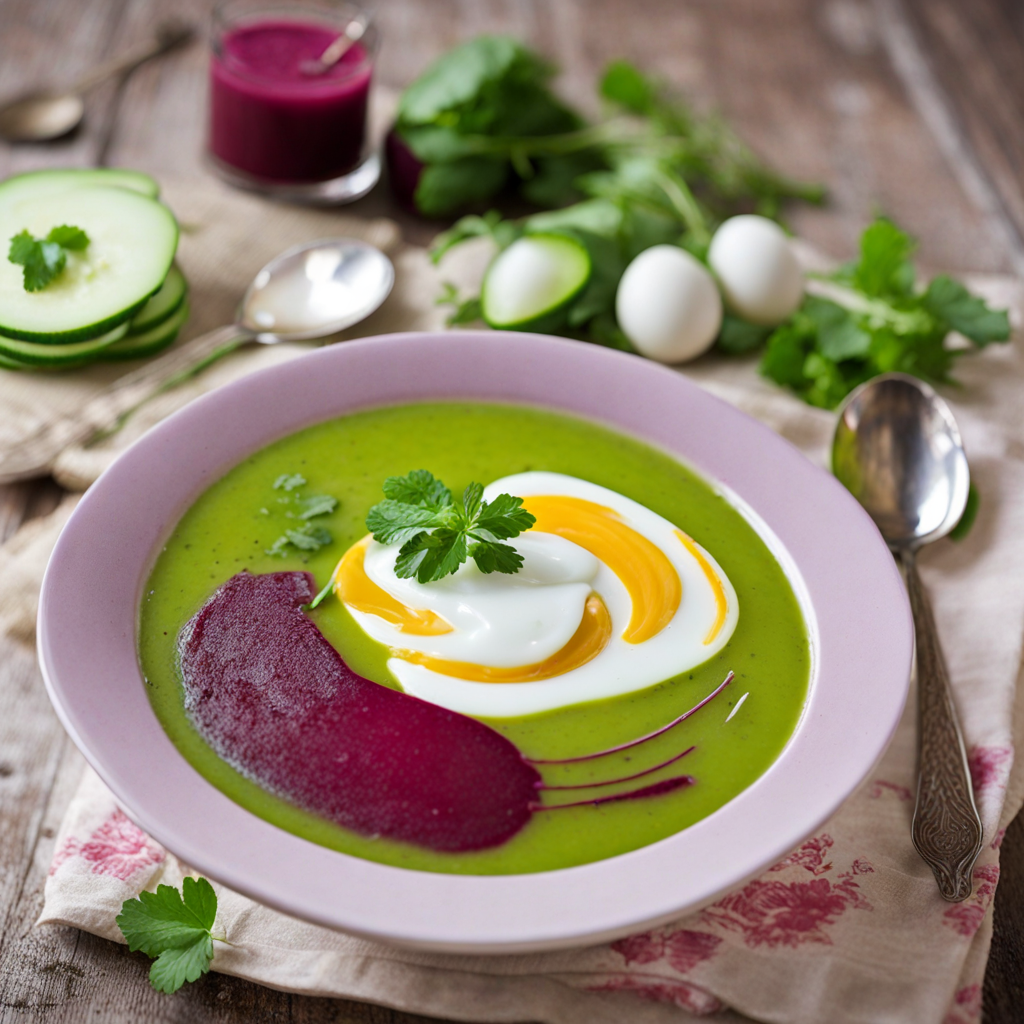Blood Sausage
Asins desa, or blood sausage, is a traditional dish in Latvian cuisine that reflects the country’s long-standing agricultural practices and culinary heritage. This dish is particularly popular during festive occasions and is often associated with the celebration of Midsummer or winter holidays. The origins of asins desa can be traced back to rural Latvia, where farming communities would utilize every part of the animal after slaughter, adhering to the principle of minimizing waste. This practice not only speaks to the resourcefulness of Latvian cooking but also highlights the cultural significance of blood sausages across various European cuisines. The flavor profile of asins desa is robust and savory, characterized by the deep richness of the blood combined with a variety of spices and seasonings. The primary taste comes from the use of pig's blood as the main ingredient, which lends a distinct earthiness to the sausage. The addition of barley or buckwheat, often used as a filler, contributes a slightly nutty flavor and a chewy texture. Common seasonings include salt, pepper, and sometimes allspice or marjoram, which enhance the overall flavor while providing aromatic depth. When cooked, asins desa has a unique umami quality, making it a hearty and satisfying dish that pairs exceptionally well with sour cream or pickles. Preparation of asins desa is a meticulous process that requires both skill and tradition. The first step involves collecting fresh pig's blood, which is then mixed with the chosen filler, such as barley or buckwheat. The
How It Became This Dish
Origin of Asins Desa Asins desa, or blood sausage, is a traditional dish that has its roots in the culinary practices of Latvia and much of Eastern Europe. This unique sausage is primarily made from pig's blood, fat, and a variety of spices, along with grains such as barley or oats. The origins of Asins desa can be traced back to the medieval period, when the practice of blood sausage-making emerged as a method to preserve and utilize every part of the animal following a slaughter. This was particularly important in agrarian societies where food scarcity was a constant concern, making it essential to minimize waste. The preparation of Asins desa often coincided with significant agricultural events, such as the autumn harvest or the slaughtering season, which typically occurred in late fall. During these times, families would come together to process meat and create their own sausages. This communal approach not only fostered a sense of togetherness but also reinforced cultural traditions passed down through generations. \n Cultural Significance In Latvian culture, Asins desa holds a special place as a symbol of heritage and rustic cuisine. It embodies the resourcefulness of Latvian farmers, who made the most of their livestock by creating a dish that could be preserved and enjoyed throughout the winter months. The dish is often associated with traditional celebrations, such as Midsummer (Jāņi) and Christmas, where it is served alongside rye bread, pickles, and other local specialties. Asins desa also reflects the agricultural landscape of Latvia, which is characterized by its vast fields and farms. The ingredients used in the sausage, such as barley and oats, are staples of the Latvian diet and highlight the connection between food and the land. Moreover, the sausage's preparation is a form of culinary storytelling, as each family may have their own unique recipe that incorporates local spices and personal touches, thus preserving their individual culinary heritage. \n Development Over Time As the years progressed, the methods and ingredients used to make Asins desa evolved. In the past, the production of blood sausage was largely a household endeavor, with families creating their own versions based on regional customs and available resources. However, with the advent of industrialization and globalization in the 19th and 20th centuries, the production of Asins desa began to shift towards commercial manufacturing. This change led to the proliferation of various commercial brands, each claiming to honor the traditional recipes while introducing modern techniques and preservatives. Despite these changes, many Latvians continue to cherish homemade Asins desa, often prepared during family gatherings or special occasions. The revival of interest in traditional foods has spurred a renaissance of artisanal sausage-making across the country. Chefs and home cooks alike are rediscovering ancient techniques, using high-quality, locally sourced ingredients to honor the cultural significance of the dish. This resurgence not only strengthens communal ties but also promotes sustainability and supports local economies. \n Regional Variations While Asins desa is a beloved staple throughout Latvia, regional variations exist that reflect local tastes and traditions. For instance, in the regions of Kurzeme and Zemgale, the sausage may be prepared with specific herbs and spices that are characteristic of the area. Some variations might include the addition of onions, garlic, or even fruits like apples for a touch of sweetness. These local adaptations emphasize the diversity of Latvian cuisine and the creative spirit of its people. In addition, the preparation methods can vary widely from one family to another. Some may prefer to smoke their sausages for added flavor, while others opt for a fresher version that is simply cooked or boiled. These differences not only highlight individual family traditions but also foster a sense of regional pride, as each area showcases its own unique take on the classic dish. \n Asins Desa Today In contemporary Latvia, Asins desa remains a symbol of national pride, celebrated in festivals, markets, and restaurants alike. Food festivals often feature this traditional sausage, where visitors can sample various recipes and learn about the history and significance of the dish. It is not uncommon to see Asins desa paired with local craft beers or kvass, further emphasizing its role in Latvian culinary culture. Moreover, as Latvia continues to navigate its identity in the modern world, traditional foods like Asins desa serve as a reminder of the rich history and cultural heritage that shape the nation. Today’s chefs are increasingly incorporating traditional dishes into modern cuisine, bridging the gap between the past and the present. This fusion of old and new not only keeps the tradition alive but also introduces Asins desa to a broader audience, including international food enthusiasts. \n Conclusion of Asins Desa's Legacy Asins desa stands as a testament to the resilience and creativity of Latvian culture. From its humble origins as a means of preserving resources to its modern-day resurgence as a celebrated dish, the journey of this blood sausage encapsulates the essence of Latvian identity. Each bite of Asins desa tells a story of tradition, community, and a deep-rooted connection to the land. As Latvia continues to evolve, the legacy of Asins desa will undoubtedly endure, reminding future generations of the importance of culinary heritage and the stories that food can tell.
You may like
Discover local flavors from Latvia







